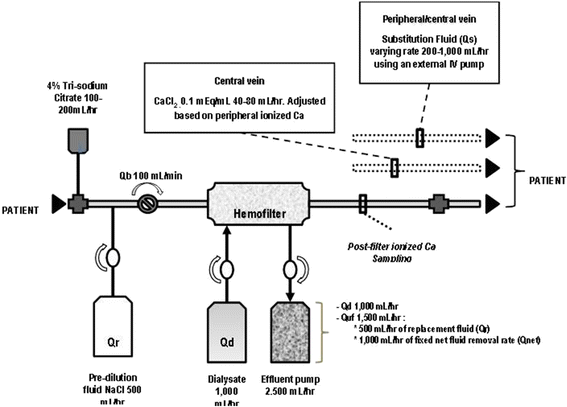Fluid overload in the ICU: evaluation and management
- PMID: 27484681
- PMCID: PMC4970195
- DOI: 10.1186/s12882-016-0323-6
Fluid overload in the ICU: evaluation and management
Abstract
Background: Fluid overload is frequently found in acute kidney injury patients in critical care units. Recent studies have shown the relationship of fluid overload with adverse outcomes; hence, manage and optimization of fluid balance becomes a central component of the management of critically ill patients.
Discussion: In critically ill patients, in order to restore cardiac output, systemic blood pressure and renal perfusion an adequate fluid resuscitation is essential. Achieving an appropriate level of volume management requires knowledge of the underlying pathophysiology, evaluation of volume status, and selection of appropriate solution for volume repletion, and maintenance and modulation of the tissue perfusion. Numerous recent studies have established a correlation between fluid overload and mortality in critically ill patients. Fluid overload recognition and assessment requires an accurate documentation of intakes and outputs; yet, there is a wide difference in how it is evaluated, reviewed and utilized. Accurate volume status evaluation is essential for appropriate therapy since errors of volume evaluation can result in either in lack of essential treatment or unnecessary fluid administration, and both scenarios are associated with increased mortality. There are several methods to evaluate fluid status; however, most of the tests currently used are fairly inaccurate. Diuretics, especially loop diuretics, remain a valid therapeutic alternative. Fluid overload refractory to medical therapy requires the application of extracorporeal therapies. In critically ill patients, fluid overload is related to increased mortality and also lead to several complications like pulmonary edema, cardiac failure, delayed wound healing, tissue breakdown, and impaired bowel function. Therefore, the evaluation of volume status is crucial in the early management of critically ill patients. Diuretics are frequently used as an initial therapy; however, due to their limited effectiveness the use of continuous renal replacement techniques are often required for fluid overload treatment. Successful fluid overload treatment depends on precise assessment of individual volume status, understanding the principles of fluid management with ultrafiltration, and clear treatment goals.
Keywords: Acute kidney injury; Continuous renal replacement therapies; Diuretics; Fluid overload.
Figures


References
Publication types
MeSH terms
LinkOut - more resources
Full Text Sources
Other Literature Sources
Medical

